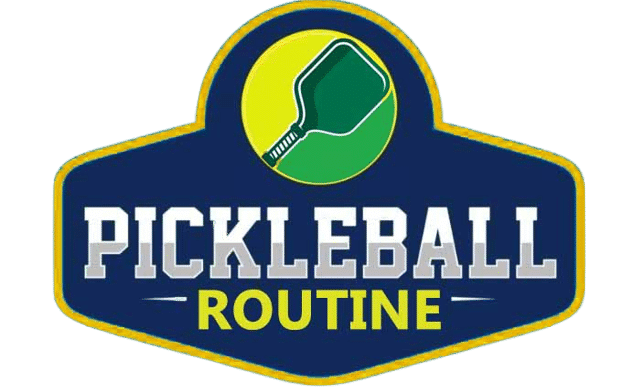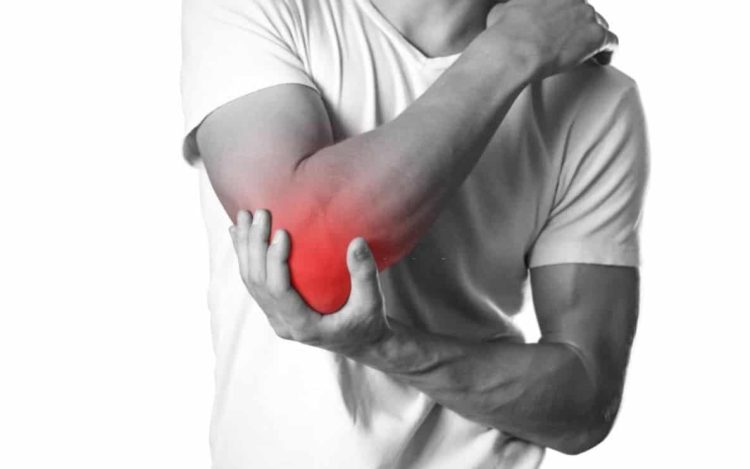Yes, you can get tennis elbow from playing pickleball. This condition, medically known as lateral epicondylitis, occurs due to repetitive arm and wrist motions, especially during actions like serving or backhand strokes. These movements strain the extensor tendons in the forearm, leading to tiny tears, inflammation, and pain on the outside of the elbow. Improper technique and using the wrong equipment can increase the risk.
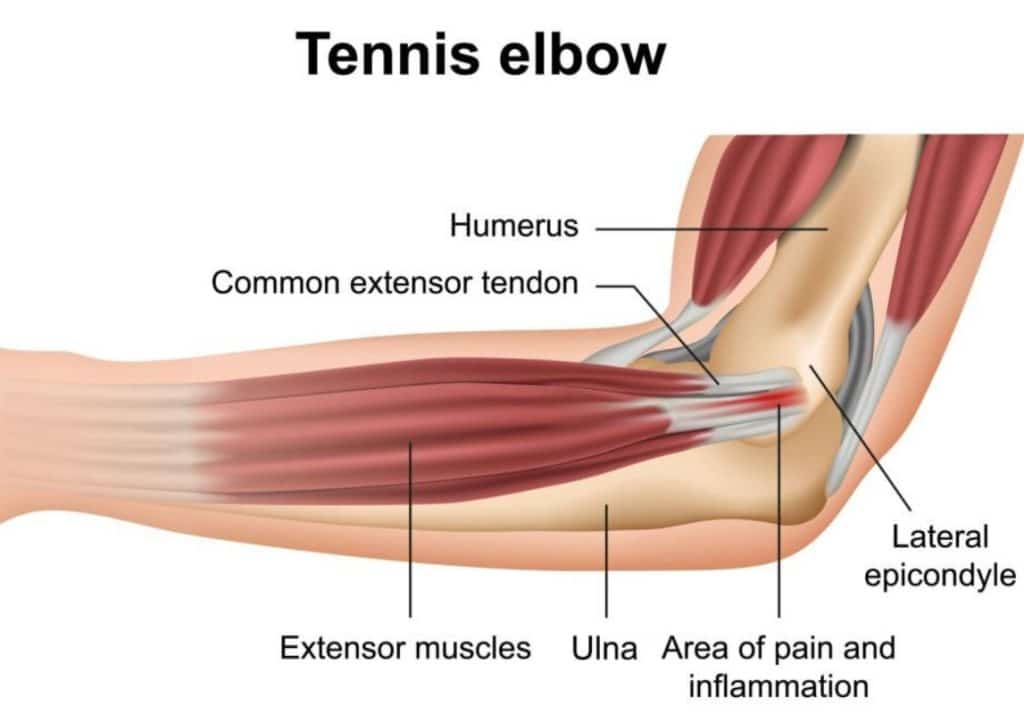
Pickleball elbow’s symptoms usually appear gradually and aren’t connected to a particular event or injury.
People who don’t play racket sports, such as cooks, carpenters, plumbers, and painters, are also frequently diagnosed with this ailment.
The forearm extensors, which attach to the lateral epicondyle and elevate the hand and wrist, are the muscles involved in this injury.
Pickleball elbow is a condition marked by pain, burning, point tenderness, and swelling on the exterior of the elbow.
The symptoms are made worse by gripping a paddle, shaking one’s hands, lifting something heavy, clenching one’s fist, turning a door handle, and using backhand strokes.
Signs & Symptoms of Pickleball Elbow:
- On the outside of the elbow, there is pain or discomfort.
- Tenderness around the boney outer elbow (behind the lateral epicondyle of the arm bone) can be felt by palpating along the elbow.
- Many athletes report that squeezing their fists, shaking their hands, opening doors, carrying coffee mugs and dinner plates, weightlifting, and even typing cause their outer elbow aches to worsen. It is also typical to develop grip weakness.
- As many people wake up at night rolling onto their elbows, elbow pain may get worse at night. However, many people complain of elbow pain while lying on their back or the other side.
- The only symptom of pickleball elbow is elbow soreness on one side. Elbow discomfort that presents similarly on both sides will likely have a different cause.
- Pain that begins on the outside of the elbow may radiate to the forearm muscles.
- Pickleball elbow does not cause nerve compression in its purest form, therefore numbness and tingling in any way in the hand suggest there is likely a pinched nerve in the neck or elbow region.
- The nerve compression is in the neck or skull areas, according to the change in sensation in both hands.
What Causes Pickleball Elbow?
The most popular theory regarding pickleball elbow is that it results from overusing the forearm and elbow muscles.
Three circumstances can lead to overuse of the elbow’s muscles and tendons. Typically, elbow issues don’t affect only the elbow.
Situation 1: An elbow that has previously been typical but is playing unusually. We’ve all experienced painful muscles after engaging in too much activity too quickly.
I can still clearly recall playing pickleball for three hours nonstop for the first time. My knees, lower back, and right elbow were all hurting.
Does this imply that there is a problem with my body in any way? No, not always. It implies that I overdid it too quickly.
We have conversations with our clients about “load management” when this situation keeps happening.
Elbow pain is often caused by placing too much strain on the joint too soon and without ‘gradually building up of fun’.
Allow your body enough time to adjust. Play for an hour today, then another hour tomorrow, the next day, and so forth. Week 2: Play every day for one and a half hours. Week 3: Increase by 30 minutes.
Decreased activity spikes, especially after periods of inactivity (as many people experienced under shelter-in-place orders), would be a straightforward remedy in this instance.
Situation 2: While playing normally, a previously weak elbow starts to hurt. After playing for months while being responsible and exercising moderation, your elbow suddenly begins to pain.
You might have exposed a part of your body in this instance that was vulnerable to harm during routine play (loads).
This is the most typical kind of pickleball elbow, and it can be treated by rehabilitating both the elbow and the entire arm. establishing a strong hand, wrist, elbow, shoulder, and neck is necessary for establishing a powerful elbow.
If you merely strengthen the elbow, the weakest part of the upper limb will start to hurt the next.
Situation 3: Your elbow is healthy, and you play normally, yet you still have sudden elbow pain. We have taken into account the remainder of the limb in this case.
The body functions as a whole. Without using your hand, wrist, elbow, shoulder, core, legs, neck, and other body parts, you cannot hit the ball.
For the backhand, your entire body must work together.
Treatment for Pickleball Elbow:
Your situation, as described in the previous section, will determine the best course of action for treating pickleball elbow.
1. Rest:
In scenario 1, where you have played too much, too soon, rest is usually beneficial for the gamer. In most cases, if you allow your body the chance, it can heal on its own and is highly resilient.
The recommended solution is five days of rest. Visit non-picklers for a cup of coffee while you watch others play pickleball, practice your footwork, or just unwind.
2. Ice Your Elbow:
Icing the elbow helps to reduce discomfort, but in recent years, its efficacy has come under scrutiny.
This works best in cases of situation 1 that are chronic. When a player needs to play again in less than 24 hours, icing helps to decrease pain and swelling.
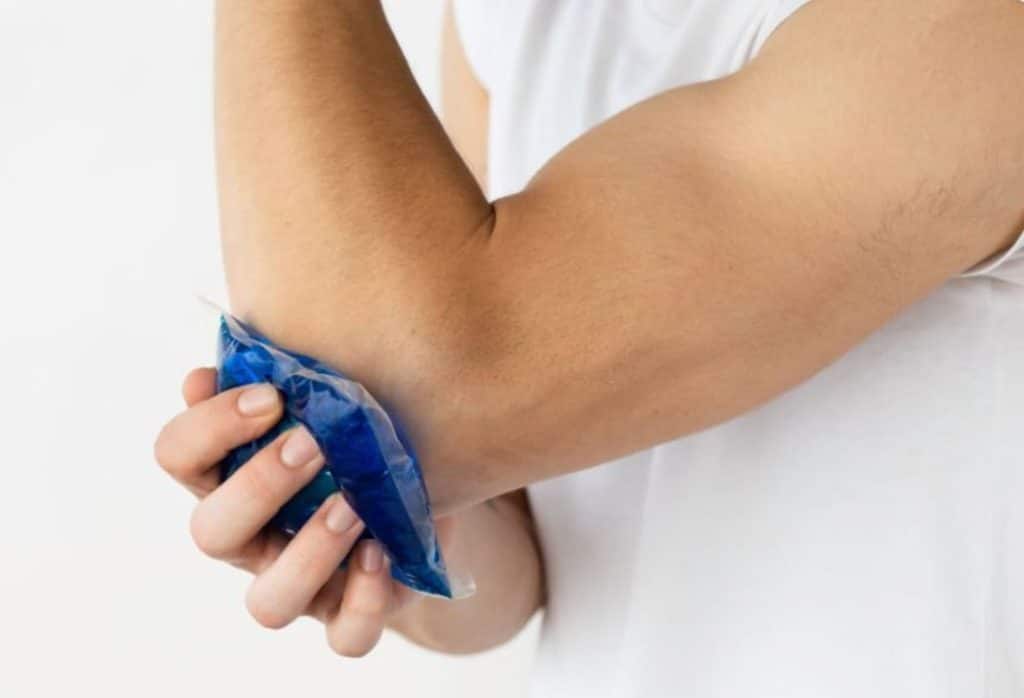
Icing might not be the greatest choice if you are a casual player who can afford a few days off.
Other methods of pain relief include delaying painful activities for a few days. Don’t experiment there. Relax and have faith in the procedure.
3. Home Therapy Exercises
In cases 2 and 3, pickleball elbow home rehabilitation exercises can be beneficial.
The activities, though commonly referred to as “physical therapy,” can be recommended by a chiropractor, an acupuncturist, a physician, or even a medical exercise specialist.
While in instance 3 we would be attempting to strengthen the elbow’s supporting cast (shoulder, wrist, hand, and neck), the rehabilitation exercises in condition 2 may be more focused on the elbow itself.
Front planks and grip-strengthening exercises like towel squeezing and rice grabs are terrific places to start for circumstance 2.
Exercises that target areas other than the elbow are a smart bet in situation 3.
The best places to start are with side planks, low bears, and banded face pushes (for neck and shoulder function).
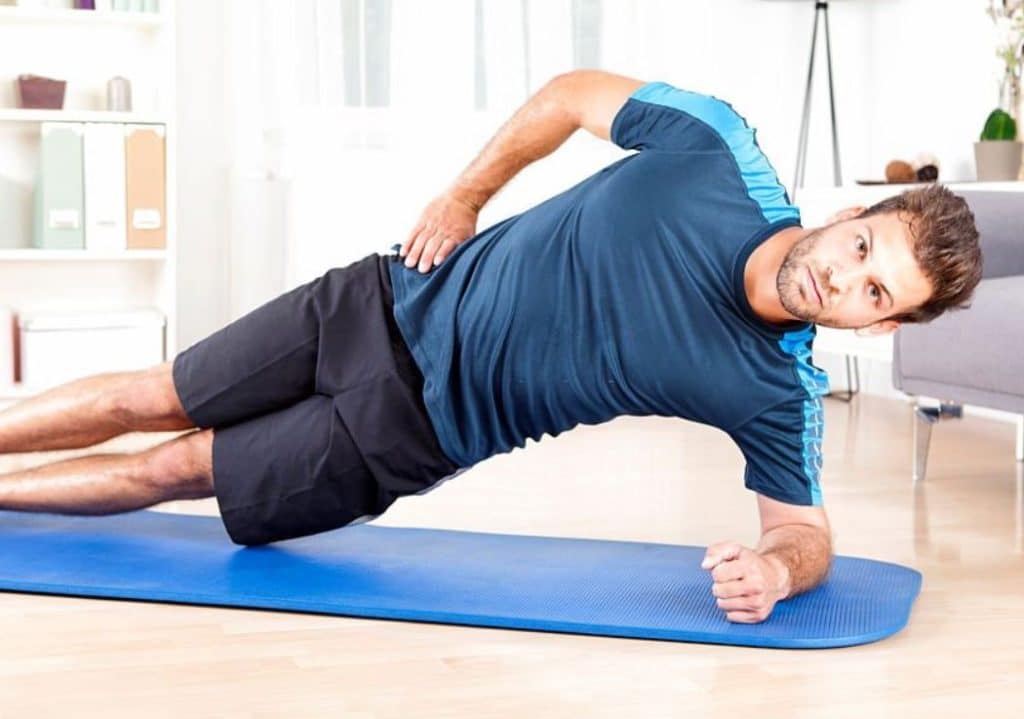
Note: Many of these exercises for at-home therapy are effective in the appropriate setting, but HOW you carry out the exercises matters more than you might imagine.
Simply performing the exercise is all that’s required to work with therapy.
Form, tension, workload, and the area of your body that feels like it is working the hardest are all crucial indicators that a qualified rehab professional will use to determine whether a treatment activity is appropriate for you.
In line with this, progressions and regressions are made. Exercises in physical therapy that seem to do nothing and are easy are something we all detest.
You can adjust them to work best for you with the assistance of an experienced coach.
4. Stretching:
If you stretch the right muscles in situations 2 and 3, it usually works nicely.
While stretching joints and muscles that may need more flexibility to function efficiently, stretching the elbow itself has been shown to help lessen pain.

With the static stretches listed below, I like to focus on the shoulder, mid-back, and finger and elbow extensors.
Hold each for 20 to 30 seconds, then perform 5 repetitions, three times daily for a week.
5. Agility and Footwork:
In all three situations, it’s critical to use good footwork and your body to position yourself for optimal swing mechanics.
I won’t argue that this is the best approach to get rid of elbow discomfort, but it’s a terrific way to stop it from becoming worse.
6. Getting the Right Racket:
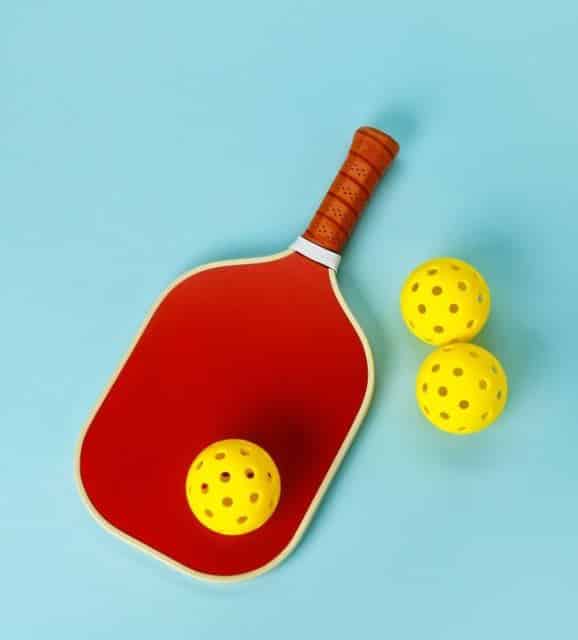
Having the right pickleball paddle is crucial in all three instances. The proper racket and grip can significantly reduce the risk of developing pickle elbow.
7. Coaching:
In all three cases, having an experienced coach is crucial for both safety and athletic performance.
Even though we all know deep down that coaching and advice are significant, I could write all day about the several professional sports that recognize the worth of a coach.
Make sure you know how to use your body if you intend to pickle for years to come. Similar to NASCAR, the driver is just as crucial as the car itself.
If you are an advanced player, maybe you can check out some drills that I’ve already posted in this guide. Also, I highly recommend choosing pickleball shoes designed for tennis elbow issues.
Conclusion:
Playing pickleball has many health advantages, but the repetitive motion of hitting the ball may lead to elbow injuries.
Hopefully, the information in this article has shed some light on the causes and potential things to look at to minimize the pain and put you on the road toward wellness.
So that you are able to continue playing the sport, you love the most.

It’s me Joe, a devoted pickleball enthusiast, and an avid player, I’m passionate about sharing the joy and excitement of the game through my Pickle Ball Routine. With years of experience on the court, I have honed my skills, explored various strategies, and developed a deep understanding of the nuances of pickleball.
I believe in the power of community and the incredible connections that can be forged through pickleball. I have had the privilege of engaging with players of all levels, from beginners seeking guidance to seasoned athletes looking to enhance their gameplay. My friendly and approachable demeanor makes me a valuable resource for players of all backgrounds.
Through Pickle Ball Routine, I aim to inspire and educate fellow pickleball enthusiasts. By sharing personal experiences, tips, techniques, and stories from the game, I strive to create a platform that fosters growth, camaraderie, and an unyielding passion for pickleball.
